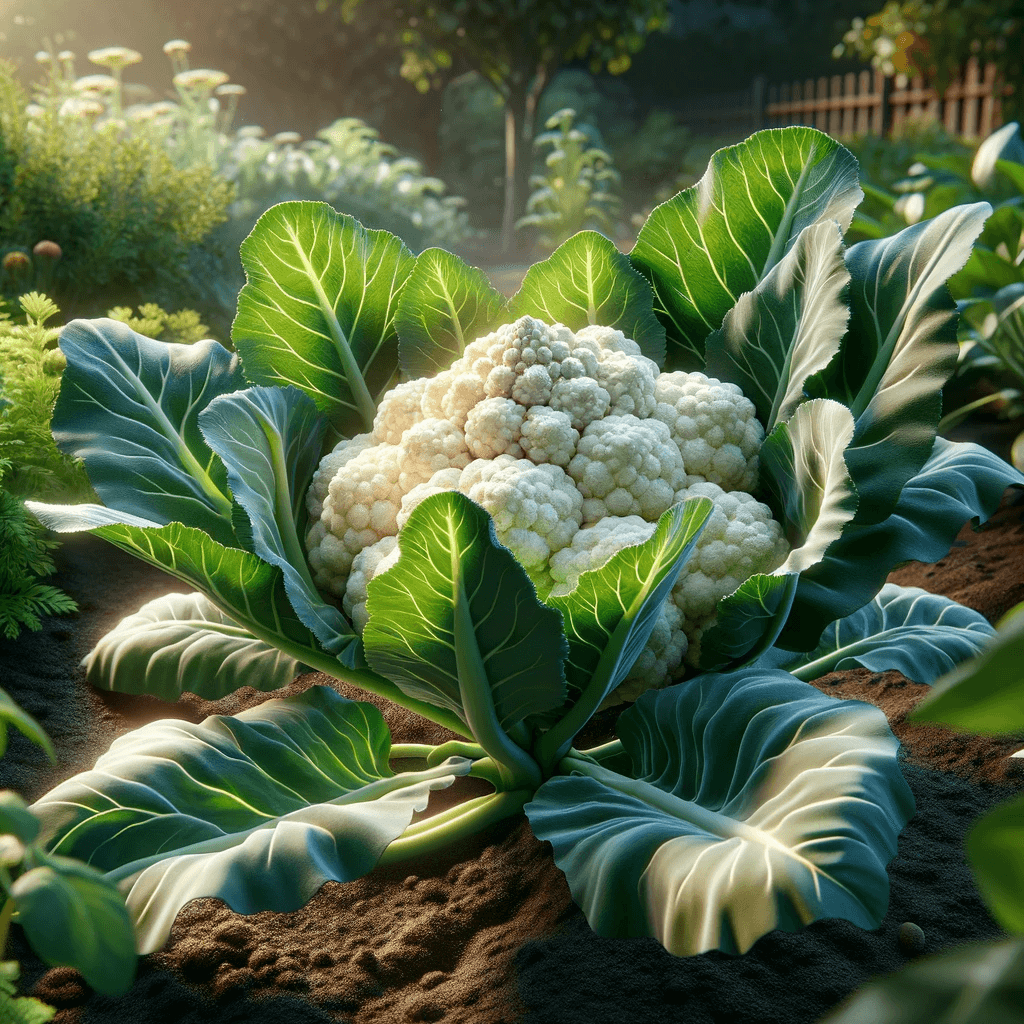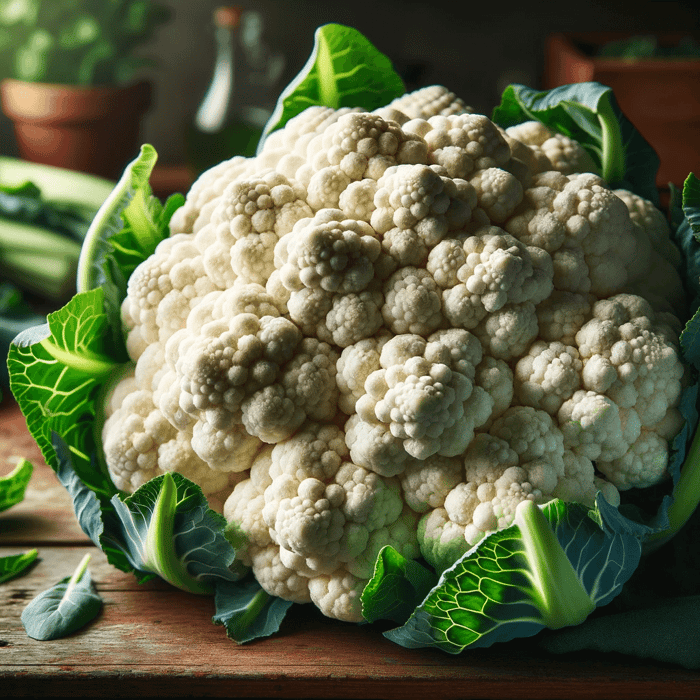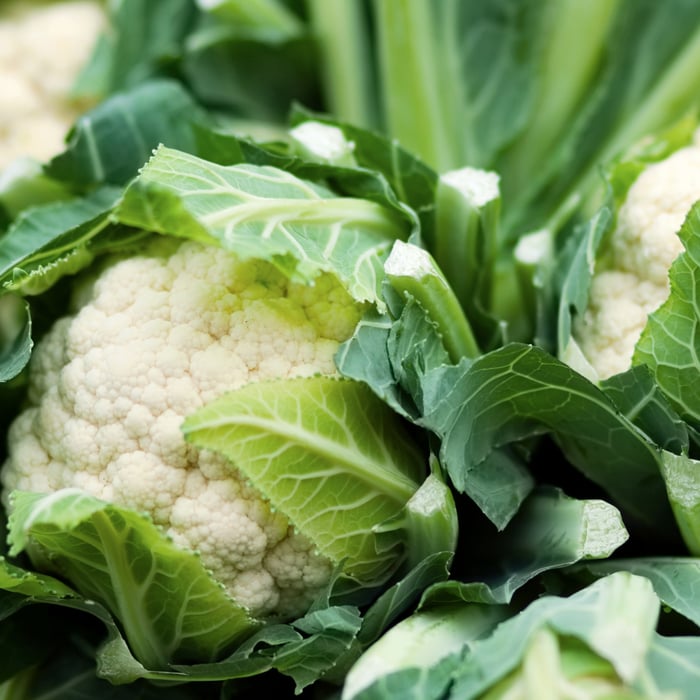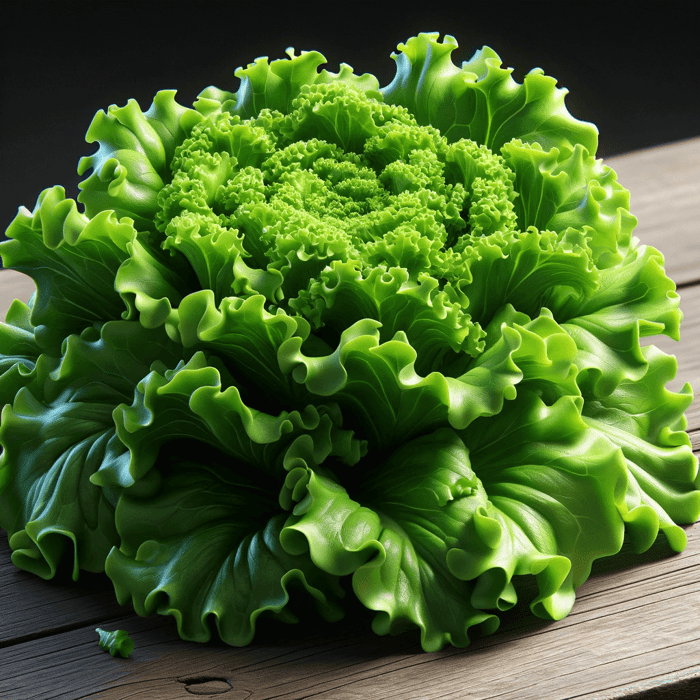Cauliflower is a delicious and nutritious vegetable that can be used in various dishes. It's low in calories but high in fiber, vitamins, and minerals like vitamins C, K, and B6. Plus, it's versatile enough to be used as a substitute for rice or potatoes in many recipes. But growing
cauliflower can be challenging. Knowing the right cauliflower companion plants will help ensure a more successful garden for you and your
cauliflower seeds.
It requires specific growing conditions and is susceptible to pests and diseases like cabbage worms, aphids, and clubroot. That's where companion planting comes in.
Snowball Y Improved Cauliflower Seeds
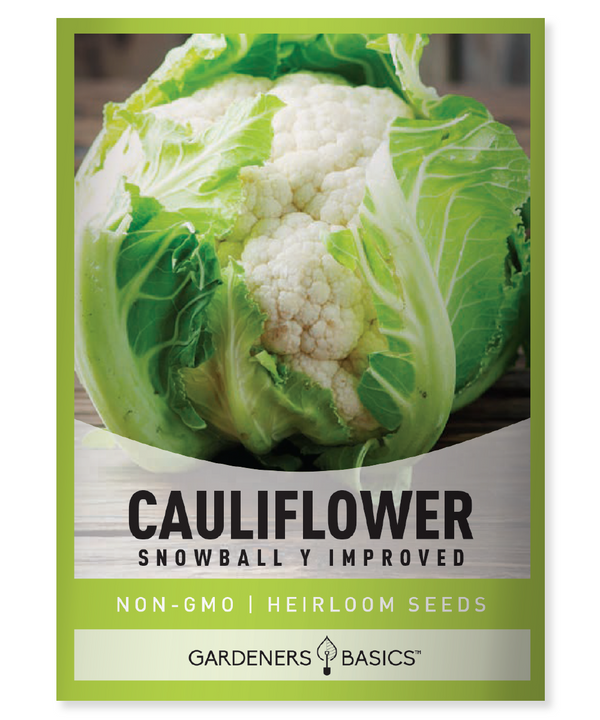
$2.49
Snowball Y Improved Cauliflower Seeds - Heirloom, Non-GMO, Non-Hybrid, Open-Pollinated Grow your own crisp and delicious Snowball Y Improved Cauliflower with our premium-quality seeds, perfect for gardeners who value heirloom, non-GMO, non-hybrid, and open-pollinated varieties. This early-maturing cauliflower produces smooth,… read more
The Benefits of Companion Planting
Companion planting is the practice of growing different plants for mutual benefit. It can improve soil health, attract beneficial insects, repel pests and diseases, and increase yields. For cauliflower specifically, companion planting can help improve its overall health and productivity by providing shade from the sun or wind protection and offering support to grow strong stems without bending over or breaking easily.
Companion planting also helps reduce competition among plants for nutrients in the soil. This happens because certain plants fix nitrogen into the soil, making it available to other plants nearby that need it most.
Best Companion Plants for Cauliflower
One effective way to optimize your garden with cauliflower is by planting compatible crops nearby that provide benefits like improved soil fertility or natural pest control.
Broccoli is an excellent choice as it has similar growing conditions to cauliflower while helping improve soil health with root exudates that break down organic matter into beneficial nutrients for both crops.
Cabbage is another great option because it belongs to the same family as cauliflower, which means they will often face similar pest threats, such as
aphids or
whiteflies, but together create an environment where these pests are less likely to thrive. Spinach is another well-suited companion plant for cauliflower.
The two plants have opposite needs regarding light, moisture, and nutrients. Spinach can provide shade and moisture retention while not competing for nutrients with the cauliflower, which leads to both plants thriving.
Other Compatible Plants for Cauliflower
Carrots are an excellent addition to any garden bed where cauliflower is also being grown because they are deep-rooted and help break up soil that might otherwise be too compacted. This allows water and air to penetrate deeper into the soil, which benefits all plants nearby.
Peas are also a great choice as they fix nitrogen in the soil, like broccoli. This increases available nitrogen levels in the soil, leading to better growth rates and stronger roots.
Marigolds are another compatible plant that can act as a natural pest repellent. They release chemicals that deter harmful insects while attracting beneficial ones, like ladybugs that eat aphids.
Plants That Should Be Avoided
While there are many plants you can plant alongside cauliflower, there are also some that should be avoided. Tomatoes, for example, do not make good companions because both plants require heavy feeding from the same nutrients in the soil — this creates competition among them and will result in stunted growth or poor yields overall. Strawberries should also be avoided because they're prone to diseases similar to cauliflower, such as fungal diseases like Verticillium wilt or powdery mildew, which might infect nearby crops if present in large enough amounts.
Get Creative with Companion Planting
Companion planting is a great way to optimize your garden by providing your crops with various benefits like natural pest control or improved soil fertility. Regarding growing cauliflower specifically, plenty of options are available depending on what you want from your garden bed - whether it's more nutrients in the soil or fewer pests. Get creative and try different combinations to see what works best for you!
Best Companion Plants for Cauliflower
Broccoli: Similar Growing Conditions and Pests, Mutually Beneficial for Soil Health
If you love cauliflower, there's a good chance that you also enjoy broccoli. Fortunately, these two vegetables are perfect companions in the garden. Not only do they share similar growing conditions and pests, but they also benefit from each other's presence in the soil.
Broccoli and cauliflower both prefer cool weather and total sun exposure. They also have similar soil requirements - well-draining soil rich in organic matter.
Waltham 29 Broccoli Seeds
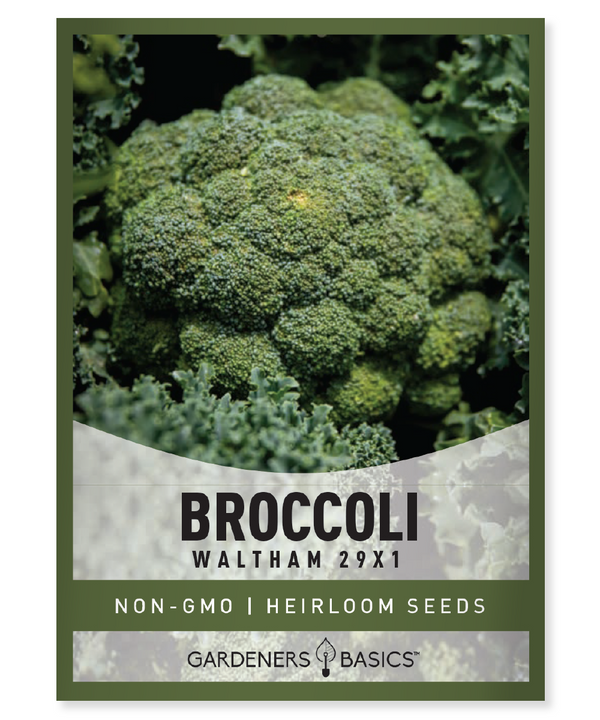
$2.49
Waltham Broccoli Seeds – Heirloom, Non-GMO, Non-Hybrid, Open-Pollinated Grow the perfect garden with our premium Waltham 29x1 Broccoli seeds, a versatile, cold-tolerant heirloom variety that produces large, flavorful heads with tender side shoots for extended harvests. These seeds are non-GMO,… read more
Since they are both members of the Brassicaceae family, they are susceptible to the same pests and diseases, including aphids, cabbage loopers, and flea beetles. When planted together, broccoli and cauliflower can help each other by improving soil health.
As brassicas, they have a standard root system that can break up compacted soil and improve drainage. Additionally, when brassicas break down in the soil after harvest or at the end of their growing season, they release nutrients such as nitrogen back into the ground.
Cabbage: Same Family as Cauliflower, Helps Repel Pests and Diseases
Since cabbage is also a member of the Brassicaceae family, like cauliflower, it's no surprise that it also makes an excellent companion plant for your cauliflower crop. In fact, planting cabbage with your cauliflower can help deter common pests like aphids.
Cabbage contains natural compounds called glucosinolates, which repel certain insects like aphids when released into the air around them. The presence of cabbage nearby can help prevent these pests from attacking your precious cauliflower crop.
Additionally, since both plants have similar nutrient needs (particularly sulfur), planting them together allows them to share nutrients from the soil more efficiently. Cabbage is also known to be a heavy feeder of some nutrients that cauliflower does not particularly need, so they don't compete for resources.
Spinach: Provides Shade and Moisture Retention, Doesn't Compete for Nutrients
While spinach may not be a member of the Brassicaceae family like cauliflower, it is still a fantastic companion plant.
Spinach can provide some much-needed shade to your cauliflower plants as they mature. Additionally, it helps retain moisture in the soil by acting as a living mulch, which is especially useful on hot summer days.
Bloomsdale Spinach Seeds
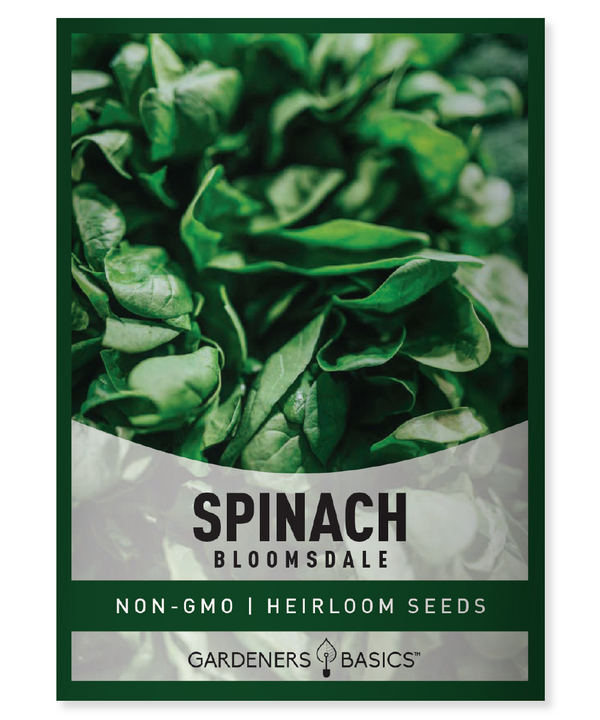
$2.49
Bloomsdale Spinach Seeds - Heirloom, Non-GMO, Non-Hybrid, Open-Pollinated Grow delicious, nutrient-packed Bloomsdale Spinach with our premium heirloom, non-GMO, non-hybrid, open-pollinated seeds. Perfect for home gardeners, this classic spinach variety is known for its deeply savoyed, glossy, dark green leaves and… read more
Unlike many other companion plants that require similar nutrient needs to their counterparts, spinach doesn't compete with cauliflower for nutrients in the soil. This makes it an excellent choice for planting alongside your cauliflower crop.
Spinach grows quickly and can be harvested early in the growing season before it takes up too much space and light from your cauliflower plants. As an added bonus, when eaten, spinach is packed full of vitamins and minerals beneficial to human health.
Other Compatible Plants for Cauliflower
When planning a garden, it's essential to consider which plants grow well together and which complement each other regarding soil health and pest control. While broccoli, cabbage, and spinach are some of the best companion plants for cauliflower, several other plants can be grown alongside this nutritious vegetable.
Carrots: Deep Roots and Beneficial Insects
Carrots have long been known as a great companion plant for cauliflower. They have deep roots that help break up compacted soil and improve drainage.
This is important because cauliflower needs well-draining soil to prevent fungal diseases from developing on its roots. In addition to improving soil health, carrots attract beneficial insects like ladybugs and lacewings.
These insects prey on garden pests like aphids and whiteflies that can damage cauliflower leaves. By
planting carrots alongside your cauliflower, you create a natural pest control system that doesn't require harmful chemicals.
Carrot Seeds For Planting | 5 Variety Pack
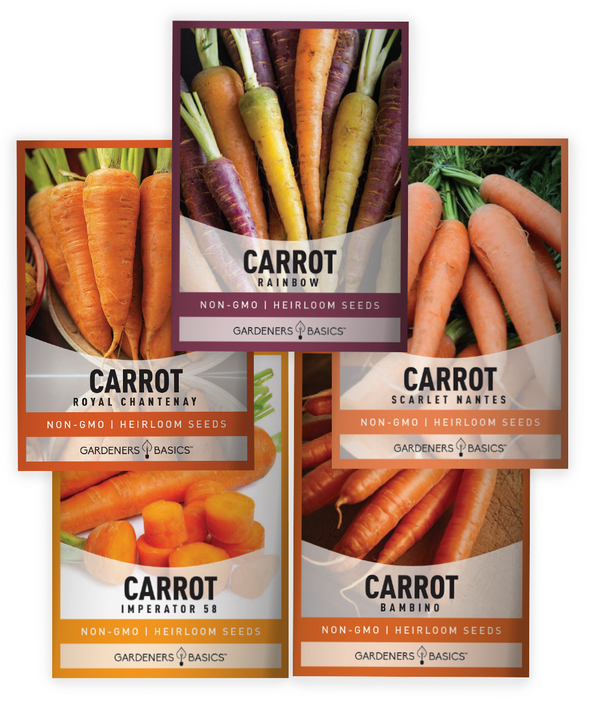
$9.95
Grow Your Own Carrots: 5 Carrot Seeds Variety Pack – Heirloom, Non-GMO, Open-Pollinated Introducing our 5 Carrot Seeds Variety Pack – a premium collection of heirloom carrot seeds designed for gardeners who want to grow fresh, vibrant, nutrient-packed carrots right… read more
To plant these two vegetables together effectively, give them plenty of space.
Carrots need room to grow their long taproots, while cauliflower needs adequate airflow around each head to prevent disease from developing.
Peas: Nitrogen-Fixing Benefits
If you're looking for another way to improve soil health while growing your food at home,
peas are an excellent choice for companion planting with cauliflower. Peas have nitrogen-fixing properties that benefit all types of plants by adding nitrogen into the soil as they grow. Nitrogen is an essential nutrient for plant growth because it's a primary component of chlorophyll—the compound responsible for photosynthesis in green plants—and is necessary for root development and fruit production.
Cauliflower requires lots of nitrogen to produce its large heads, so planting peas alongside it ensures that the soil remains fertile. Peas have shallow roots that won't compete with cauliflower for nutrients, making them an ideal companion plant.
Sugar Daddy Snap Pea Seeds
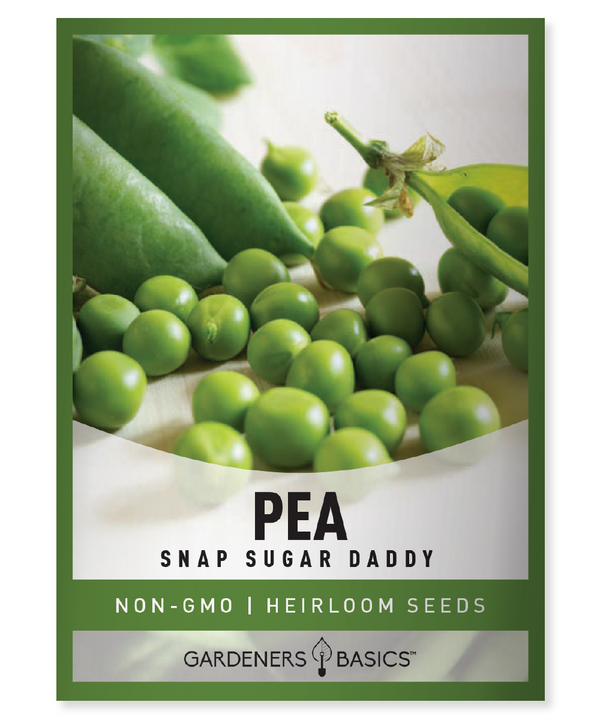
$2.49
Sugar Daddy Snap Pea Seeds – Heirloom, Non-GMO, Non-Hybrid, Open-Pollinated Grow crisp, sweet, and stringless Sugar Daddy Snap Peas in your garden with our premium heirloom seeds! Perfect for gardeners of all skill levels, Sugar Daddy Snap Peas are a… read more
Marigolds: Natural Pest Repellent
Marigolds are another excellent companion plant for cauliflower because they act as a natural pest repellent. These bright, cheerful flowers emit a fragrance that repels many garden pests like aphids and whiteflies.
They also attract beneficial insects like ladybugs and hoverflies to your garden. To use
marigolds effectively as a pest control measure, plant them in between rows of cauliflower or around the perimeter of your garden bed.
This creates a barrier that pests must cross before reaching your vegetables. It's important to note that while marigolds are effective at repelling some types of pests, they won't work against all garden pests.
Marigold Seeds For Planting | 4 Variety Pack
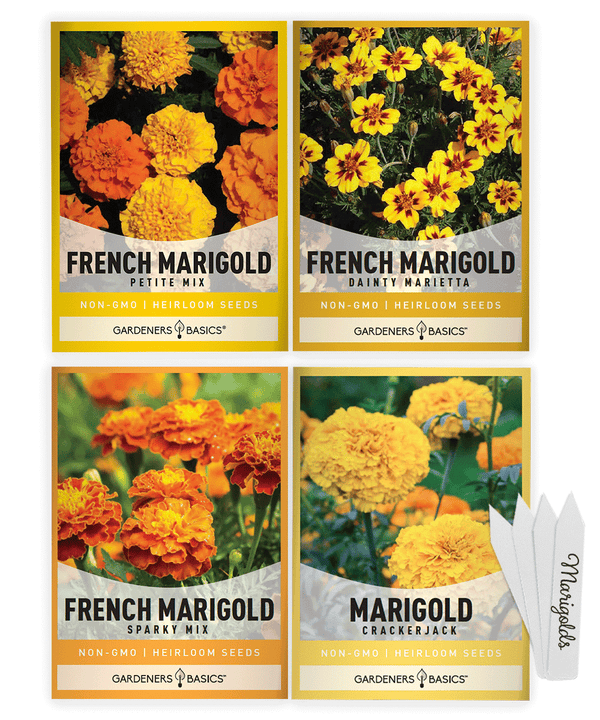
$7.95
4 Heirloom Marigold Varieties for Natural Pest Control and Beautiful Blooms Introducing our 4 Marigold Seeds Variety Pack – the perfect choice for gardeners who love vibrant, resilient blooms! This carefully selected pack includes heirloom seeds that are non-hybrid, open-pollinated,… read more
If you're dealing with a severe pest infestation, you may need chemical pesticides or other interventions to protect your plants. However, by
planting marigolds alongside your cauliflower crop, you're taking preventative measures towards a healthier garden ecosystem.
Plants to Avoid Planting with Cauliflower
Companion planting can be a great way to optimize the growth and health of your plants, but it's also essential to know which plants shouldn't be planted together. When it comes to cauliflower, there are a few plants that should be avoided. These include tomatoes and strawberries.
Tomatoes: Both Plants are Heavy Feeders and Compete for Nutrients
While
tomatoes and cauliflower might seem like they could work well together since they both require similar growing conditions, they have competing nutrient needs. Both plants are heavy feeders that require a lot of nutrients from the soil. When planted nearby, they will compete for those nutrients, potentially leading to stunted growth and smaller yields for both plants.
In addition to competing for nutrients, tomatoes can attract some pests that affect cauliflower, such as aphids and whiteflies. So not only will planting them together likely lead to poor growth outcomes, but it may also lead to increased pest problems.
Strawberries: Prone to Similar Diseases as Cauliflower
Another plant that should not be grown alongside cauliflower is strawberries. While these two plants might seem quite different at first glance, they share some common diseases, such as verticillium wilt and black rot. Verticillium wilt is a fungal disease that affects many fruiting crops, such as strawberries and tomato plants.
It can also infect cruciferous vegetables like cauliflower, leading to yellowing leaves or wilting stems. Black rot is another fungal disease affecting many brassica family members, including cabbage, broccoli, kale, and cauliflower.
Moreover, strawberries prefer soil with a pH of around 6, while cabbage-family veggies like cauliflower prefer slightly more alkaline soils above 6. So pairing them in the same garden bed may result in disease problems and competition for soil conditions.
Optimizing Your Cauliflower Garden
To get the most out of your cauliflower garden, it's essential to understand which plants work well together and which don't. While tomatoes and strawberries should be avoided, plenty of other plants can benefit cauliflower, such as broccoli, cabbage, spinach, carrots, peas, and marigolds. Practicing crop rotation is also a good idea to optimize your cauliflower garden.
This involves moving crops around yearly to prevent soil-borne diseases from building up in the same area. By rotating your crops regularly and avoiding planting cauliflower near tomatoes or strawberries, you can enjoy a bountiful harvest of delicious nutrient-packed vegetables.
Tips for Successful Companion Planting with Cauliflower
Proper Spacing Between Plants
Proper spacing is vital for planting cauliflower and its companion plants. Cauliflower requires much space to grow and thrive, so giving each plant enough room to develop properly is essential. The same goes for the companion plants you choose to plant alongside your cauliflower.
Make sure they aren't too close together or competing for resources like water and nutrients. To determine proper spacing, consult the seed packet or plant tag for each variety you plan on planting.
Typically, cauliflower should be spaced around 18-24 inches apart in rows that are four feet apart. Other companion plants may require different spacing depending on their growth habits and size.
Vegetable Seed Vault Kit | 35 Variety Pack

$29.95
$49.95
Ultimate Survival Seed Vault: 16,000+ Non-GMO Heirloom Vegetable Seeds for Emergency Preparedness Introducing the Seed Vault Kit, your all-in-one solution for emergency preparedness and sustainable gardening. This premium seed kit contains over 16,000 non-GMO, Heirloom, Non-Hybrid, and Open Pollinated seeds,… read more
Regular Monitoring and Maintenance of Garden Bed
Companion planting requires more than just throwing some seeds in the ground and hoping for the best – it requires regular monitoring and maintenance of your garden bed. This includes checking soil moisture levels daily, removing any weeds competing with your plants, and checking for signs of pest infestation.
If you notice any issues with your plants, take action immediately. Don't let a problem go unaddressed, as it can quickly escalate and lead to failure in your cauliflower crop and its companions.
Rotation of Crops to Prevent Disease Buildup
One way to prevent diseases from building up in your garden bed is by rotating crops each year. This means planting different crops on different parts of your garden bed each year instead of growing the same crop or family of crops in the same spot every year. For example, if you plant cauliflower for one year, consider planting a legume like peas or beans in that spot next year since they have nitrogen-fixing properties that benefit future crops.
Additionally, rotating crops can help prevent soil-borne diseases from building up and infecting your plants. By planting different crops in different spots each year, you reduce the likelihood of any one disease building up in the soil.
Never Overplant
It's easy to get excited about companion planting and want to plant as much as possible in your garden bed. However, overplanting can lead to overcrowding, a lack of nutrients for each plant, and an increased risk of pest infestation.
To avoid overplanting, start by deciding how many plants you want to grow and divide that number among the varieties you want to plant. This will give you a better sense of how many plants you need of each variety and how much space is required for them to thrive.
Don't Forget About Watering
Proper watering is crucial for any successful garden. Ensure you regularly water your cauliflower and its companions throughout their growth cycle.
A good rule of thumb is around 1 inch of water per week. Be mindful not to overwater your plants, though – this can lead to root rot and other issues, quickly killing off your entire crop.
Use a moisture meter or dig into the soil with your fingers to check for moisture levels before watering again. Following these tips for successful companion planting with cauliflower, you'll be well on your way to
growing a thriving garden full of healthy plants!
Conclusion Cauliflower Companion Plants
Recap of the benefits of companion planting with cauliflower
Companion planting with cauliflower has many benefits. By planting compatible plants together, we can improve soil health, deter pests and diseases, increase crop yields, and reduce our reliance on chemical fertilizers and pesticides.
Cauliflower does particularly well when grown alongside broccoli and cabbage, as these plants have similar growing conditions and are also Brassica family members. Spinach is another excellent companion plant for cauliflower as it provides shade and helps to retain moisture in the soil.
Winter Seed Assortment | 8 Variety Pack
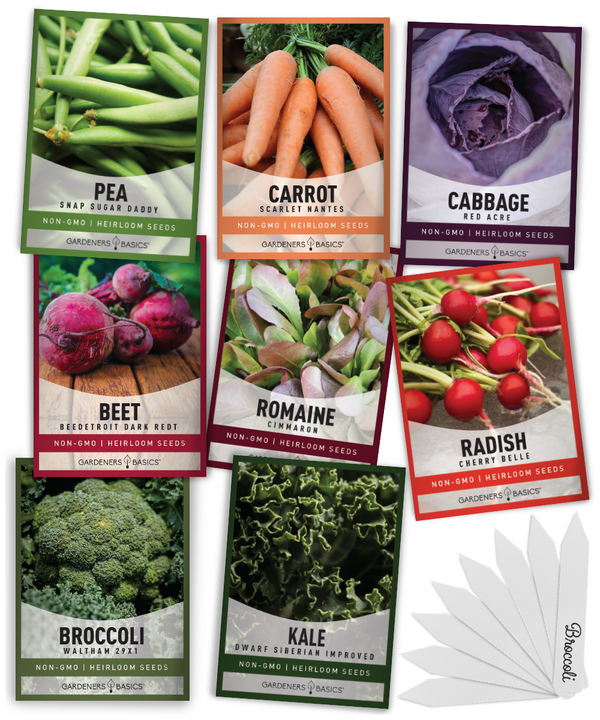
$15.95
The Ultimate Winter & Spring Vegetable Seed Assortment - 8 Vegetable Varieties Perfect for Cold Weather Introducing our 8 Winter Vegetable Seeds Variety Pack, a premium collection of heirloom, non-hybrid, open-pollinated, and non-GMO seeds perfect for growing your own nutritious and… read more
Additionally, spinach does not compete with cauliflower for nutrients or space. Other good companions for cauliflower include carrots, which help break up compacted soil with their deep tap roots while attracting beneficial insects that prey on pests that attack cauliflower.
Peas are also great to grow alongside cauliflower because they fix nitrogen in the soil, which improves plant growth. Marigolds are a natural pest repellent that can be planted alongside aphids, nematodes, slugs, and snails to combat them.
With so many potential companion plants available, it's worth experimenting with different combinations in your garden to see what works best. You will benefit from healthier crops and create a more diverse ecosystem in your backyard that can attract new wildlife, such as birds and butterflies. In addition to the benefits for your garden, companion planting is a great way to learn new horticulture and environmental science skills.
You'll discover what each plant needs to thrive and how they interact positively and negatively with others. So grab some seeds or seedlings of compatible plants and start planning your next
vegetable garden!
And remember: don't be afraid to experiment. You might just find yourself pleasantly surprised by all the benefits of an eco-friendly gardening approach.

